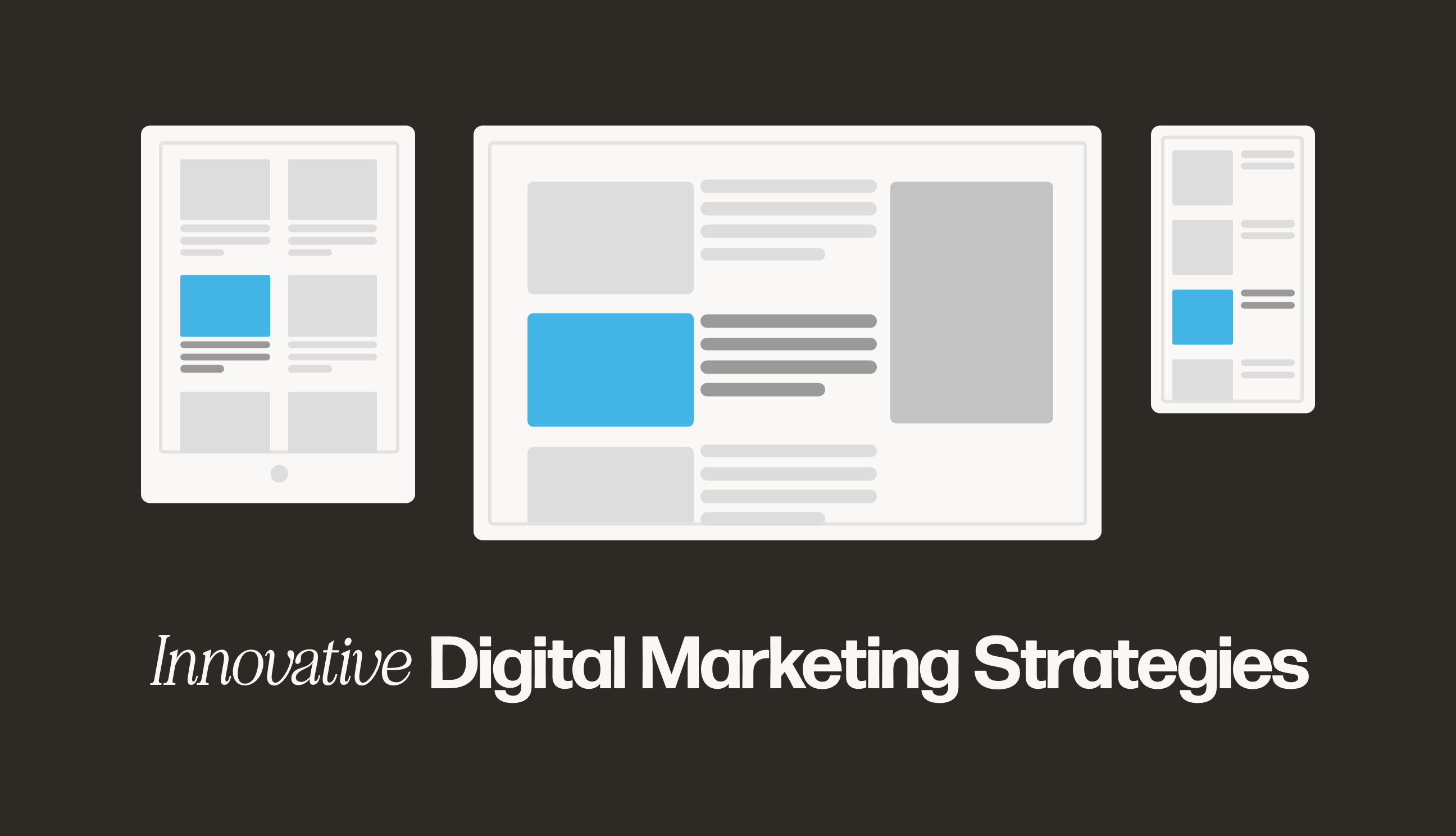What is Data-Driven Marketing? How Does it Help Grow Your Business?


By Melissa | May 20, 2022 (5 min read)
B2B Marketing | Business | Marketing | PPC | SEO | Social Media | Trends
The world today is drowning in data. We have more information about any topic you can think of, and trying to digest it all is virtually impossible.
In the information age, businesses that use data to their advantage can save money, increase sales, and improve customer loyalty.
Each marketing campaign that a business launches should strive to reach its target audience strategically using data as a guiding factor. Data-driven marketing can also reduce the risk of lost advertising revenue and waste time focusing on the wrong target market.
The reality is that no matter what industry or business you are in, you can’t only use gut-feelings or assumptions about what your customers want or how you should do your marketing.
At every stage of your marketing, you need something trackable and actionable to get the most from your advertising spend.
This article will look at how data-driven marketing can help your business grow and better target the niches you aim to sell.
What is Data-Driven Marketing?
Data-driven marketing is the approach of optimizing your business advertising and brand communications based on customer information. Data-driven marketers will use their customer data to predict their needs, decisions, and future behaviors.
Insights gained from data can help create personalized marketing strategies for the highest possible return on advertising and marketing investment.
You can think of data-driven marketing as the combination of using data and strategy to revise and optimize your marketing campaigns.
Businesses that are data-driven can collect and analyze their customer data to discover trends and patterns. They can then use this new information to decide how best to advertise, promote, and sell to their future customers.

What are the Benefits of Data-Driven Marketing?
The benefits of data-driven marketing and especially data-driven advertising are significant.
More efficient media buying. Data-driven marketing is probably the most advanced in the programmatic buying sector. By leveraging algorithms and machine learning, ad agencies and marketers remove a lot of the guesswork from media planning and buying.
Targeting the right consumers, ad spending, and marketing messages are optimized to be shown only to the marketing campaign’s appropriate targets.
The age of generic, one-size-fits-all marketing messages is over. There is still room for these big ideas for some brands, but marketing messages must get more granular to be relevant enough to resonate with consumers.
The most significant benefit of data-driven digital marketing is that you have a tangible way of knowing your customers at a deeper level. Data tools can measure every activity online and gather digital marketing data, allowing you to make informed decisions. The opposite is true for traditional marketing, which relies much on guesswork.
What Are KPIs in Digital Marketing?
A key performance indicator (KPI) is a specific type of measurement for your business’s performance against a specified objective.
Key performance indicators measure a company’s success and evaluate the short and long-term performance of a business. In terms of digital marketing, KPIs are used to ensure your business grows and improves your reach, engagement, and brand authority.
One of the key benefits of digital marketing, when compared to traditional marketing mediums, is the ability to measure and track your marketing results with pinpoint accuracy. Data takes away the guesswork because your reports show exact numbers of clicks, engagement, purchases, etc.
Here are some of the most common digital marketing KPIs to review for your business.
- Unique visitors
- Bounce rate
- Clickthrough Rate
- Conversions
- Cost-per-acquisitions
- Cost-per-opportunity
- Revenue
- Social media engagement
But, before you can begin to track your progress and measure your success, you should set your business and marketing goals. After all, you can’t hit a target you can’t see.
Here are some of the typical goals that business owners will set for their business when it comes to marketing:
- Increase customer loyalty
- Reduce customer attrition rate
- Increase customer retention rate
- Enhance customer experience and satisfaction
- Reduce website bounce rate
- Increase click-through rate
- Increase brand impressions
- Improve SERP rankings
- Increase social media mentions
- Increase website visits
- Increase new customer acquisition
- Increase existing customer purchases
Marketing KPIs are more effective once you have set goals because when you create a plan, you must then use the KPIs to determine if you are moving closer to it.
The Link Between Data and KPIs
Although the internet age has caused a lot of information overload, it also offers business owners the chance to collect and use data to their advantage.
All big brands today use digital marketing data to understand their customers, and so can you.
You can see how your users engage with your site’s content or which version of email marketing works for your audience.
Big data has become available to business owners, who use the key performance indicators to predict outcomes and make changes in their approach.

Creating a Data-Driven Digital Marketing Strategy
Planning your data-driven marketing strategy requires time and energy. To do this effectively, you should assign team members from various departments, such as marketing, sales, information technology, and customer support.
Also, having a centralized analytics tool such as a business dashboard or access to tools like Google analytics makes sure the team can use the data to their advantage.
1) Set Realistic Marketing Goals
It’s a good idea to aim for a limited number of marketing goals initially. This approach lets you determine which data is critical to your needs and narrow down your key performance indicators to what matters to your business goals. It allows for greater focus and efficiency.
Remember to look at the big picture; even though some data points may look worse than others, remember the business’s overall success is what matters.
If you have any existing digital marketing campaigns, determine their success thus far to create a baseline of success.
Finally, align your business and marketing goals with resources. It’s great to want to boost sales and reach, but you must know what resources are available to spend to make it a reality. Don’t set unrealistic goals in the beginning. Otherwise, the team will become frustrated and disappointed.
2) Collect data
Once you have started doing some marketing and gaining results, it’s time to gather data.
Ideally, each data set should be handled by a specific department (e.g., social media team for social media analytics) and inputted into the central reporting dashboard.
In some instances, the data can automatically be uploaded by connecting your different accounts. For example, tools like Google Analytics and Facebook Ads will easily integrate into tools like AdEspresso.
It is also wise to manually check the results on each platform from time-to-time. Although you are likely getting accurate reporting, you may be missing new information that the data reports offer if you don’t go back to the source often.
3) Assess and Refine
Evaluating the impact of data results from your marketing is essential. Your customers have unique needs that require a tailored strategy, and it is only through watching their behavior that you can see what works best.
As you review your results, remember to keep testing. Ideally, you should run a small-scale test before you fully commit to new changes in your approach.
Remember not to throw out what is working. As you refine your approach to your campaigns, make sure to keep the approaches that are working. There is a tendency in marketing to write off a campaign entirely if it is delivering mediocre results. This strategy can be unwise, as some elements are working; it’s just a matter of tweaking the approach.
Lastly, remove barriers for the customer to buy. It can seem straightforward to you as the business owner how to purchase your products, but customers and prospects don’t have that same understanding. Look for ways to simplify and remove any speed bumps that can slow down or limit sales.

Popular Data-Driven Marketing Tools
Using the data-driven marketing right tools can make your life easier. Here are some of the best data-driven marketing tools to apply across all channels:
- Advertising/Retargeting: Google Ads, Rocket Fuel, AdRoll, Adespresso
- Analysis and reporting: Databox, Tableau, DataHero, Optimizely
- Content: SEMRush, Buzzsumo, Canva
- Customer relationship management (CRM): Salesforce, SAP, Sugar
- Marketing automation: Marketo, Oracle Eloqua, Mailchimp
- Social media: Facebook for Business, Oktopost, Mention
- Website analytics: Google Analytics Marketing Platform, Alexa, Mixpanel
On top of all these tools, working with a reliable data-driven digital marketing agency can help you make the most from the data you gather from these analytics tools.
How To Use Data-Driven Marketing To Grow Your Business
Although it is rooted in numbers, don’t forget that data-driven marketing is people-focussed.
All decisions you make are aiming to influence the behavior and mindsets of your customers and new prospects. Whenever you aim to change your data-driven marketing, make sure it makes sense at a human level.
You shouldn’t be afraid to harness its power because putting it in context can propel your business toward next-level visibility and profitability.
Data-driven marketing is becoming a minimum requirement if you want to connect deeply with your customers and outperform your competitors. Your business goals and marketing KPIs must all be grounded in data if you’re going to keep improving your results.
The good news is that the abundance of data and the availability of tools to analyze them make data-driven marketing much more straightforward. It offers you a huge advantage in growing your customer relationships, increasing conversions, and boosting revenue.



